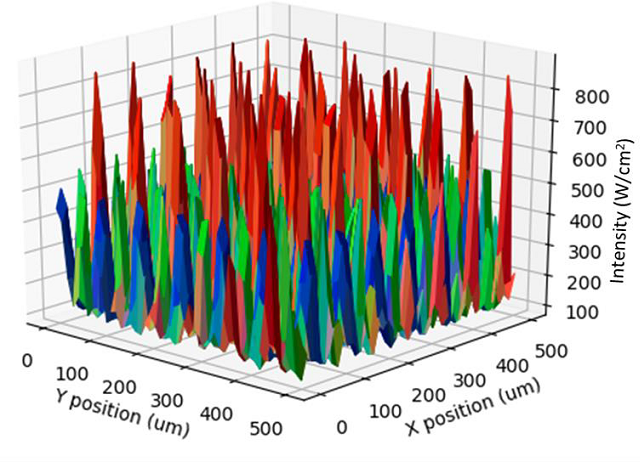In today’s technological landscape, devices, ranging from smartphones to large-scale televisions and monitors, are almost entirely dependent on displays. The performance of these displays relies heavily on the optical properties of the materials used, including liquid crystals, OLEDs, and a variety of thin films. A good understanding of these properties across the ultraviolet (UV), visible, and near-infrared (NIR) spectra is vital for optimizing display quality.
Researchers have been leveraging the power of CRAIC Technologies microspectrometers utilizing the UV-Visible-NIR and photoluminescence performance qualities to carry out key studies related to display types, designs, and materials. This article outlines the key findings and implications of this research.

Figure 1. 2030XL PRO Microspectrometer. Image Credit: CRAIC Technologies
Research Overview
Recent studies conducted by CRAIC Technologies focused on a comprehensive spectral analysis of display materials using its state-of-the-art UV-Visible-NIR microspectroscopy systems. The main goals were to:
- Characterize Optical Properties: Measure the absorption, transmission, and reflectance spectra of display materials across an extensive spectral range (200 nm to 2500 nm).
- Analyze Material Uniformity: Evaluate thin film and coating uniformity and quality of of the various materials used in displays.
- Optimize Display Performance: Offer greater insights for enhancing display brightness, color accuracy, and efficiency.
- Study Novel Materials: Investigating various materials, such as nanostructures, that can be fine-tuned for specific optical effects.

Figure 2. Image of advanced mobile phone display. Image Credit: CRAIC Technologies
Key Findings
1. Broad Spectrum Characterization:
CRAIC Technologies' microspectroscopy systems have facilitated precise measurements of the optical properties of various display materials across the UV- Visible-NIR spectrum. This extensive spectral range enabled a detailed understanding of the light interaction of the various materials and structures1,2.
High spatial resolution enabled a close examination of micro-scale features, exposing key details about the homogeneity and quality of OLEDs, QLEDs, thin films, and other components.
2. Material Uniformity and Quality:
Uniformity of color and emission intensity is crucial for developing and producing high-quality displays. Variations from pixel to pixel must be minimized in the manufacturing process.
Research has underscored the importance of uniform thin films for optimal display performance. Film thickness and composition variations can considerably impact optical properties such as transmission and reflectance.
Microspectroscopy was able to show the defects and inconsistencies in the materials, offering key feedback for manufacturing processes to improve material quality.
3. Optimization of Display Performance:
Detailed spectral analysis offers good insight into how various display materials behave, including liquid crystals, OLEDs, and quantum dots.3 This information is crucial for tuning the materials to ensure the desired optical characteristics are achieved.
Research has also revealed how specific material adjustments on the nanoscale could enhance display brightness and color gamut.4 For example, adjusting the location, spacing, and shape of nanostructures can help engineers achieve specific, desirable effects.

Figure 3. Luminance Mapping of an Advanced Mobile Phone Display. Image Credit: CRAIC Technologies
Applications and Implications
The findings from CRAIC Technologies' research have considerable implications for various aspects of display technology:
Consumer Electronics:
A better understanding of material properties can generate new developments in display technology such as more vibrant and energy-efficient displays for smartphones, tablets, and laptops.5
Television and Monitors:
Optimizing the optical properties of display materials can significantly improve the viewing experience by delivering enhanced color accuracy and greater contrast ratios in televisions and monitors.
Specialized Displays:
In applications such as virtual reality (VR) and augmented reality (AR), where display performance is critical, the insights that this research offers can contribute to advancements in high-resolution and immersive display technology.
Conclusion
Recent research conducted by CRAIC Technologies' on the UV-Visible-NIR microspectroscopy of display materials has provided vital insights into the optical properties, uniformity, and performance optimization of relevant materials.
The capability to carry out detailed spectral analysis on the microscale is vital for the progression and development of high-quality modern displays. This research highlights the significance of sophisticated characterization tools in pushing the envelope of new display technologies.
References
- Eoh, Hongkyu, Han Sol Kang, Min Ju Kim, Min Koo, Tae Hyun Park, Yeongsik Kim, Hanwhuy Lim et al. "Nonvolatile, multicolored photothermal writing of block copolymer structural color." Advanced Functional Materials 29, no. 42 (2019): 1904055.
- Jiang, Menghua, Shawn Yohanes Siew, John YE Chan, Jie Deng, Qing Yang Steve Wu, Lei Jin, Joel KW Yang, Jinghua Teng, Aaron Danner, and Cheng-Wei Qiu. "Patterned resist on flat silver achieving saturated plasmonic colors with sub-20-nm spectral linewidth." Materials Today 35 (2020): 99-105.
- Wang, Jiawei, Ke Li, Huilin He, Wengfeng Cai, Jianxun Liu, Zhen Yin, Quanquan Mu et al. "Metasurface‐Enabled High‐Resolution Liquid‐Crystal Alignment for Display and Modulator Applications." Laser & Photonics Reviews 16, no. 1 (2022): 2100396.
- Daqiqeh Rezaei, Soroosh, Jinfa Ho, Ali Naderi, Mohammad Tavakkoli Yaraki, Tao Wang, Zhaogang Dong, Seeram Ramakrishna, and Joel KW Yang. "Tunable, cost‐effective, and scalable structural colors for sensing and consumer products." Advanced Optical Materials 7, no. 20 (2019): 1900735.
- Liang, Jie, Yan Jin, Huiling Yu, Xinjie Chen, Lin Zhou, Pengcheng Huo, Ye Zhang et al. "Lithium-plasmon-based low-powered dynamic color display." National Science Review 10, no. 1 (2023): nwac120.

This information has been sourced, reviewed and adapted from materials provided by CRAIC Technologies.
For more information on this source, please visit CRAIC Technologies.